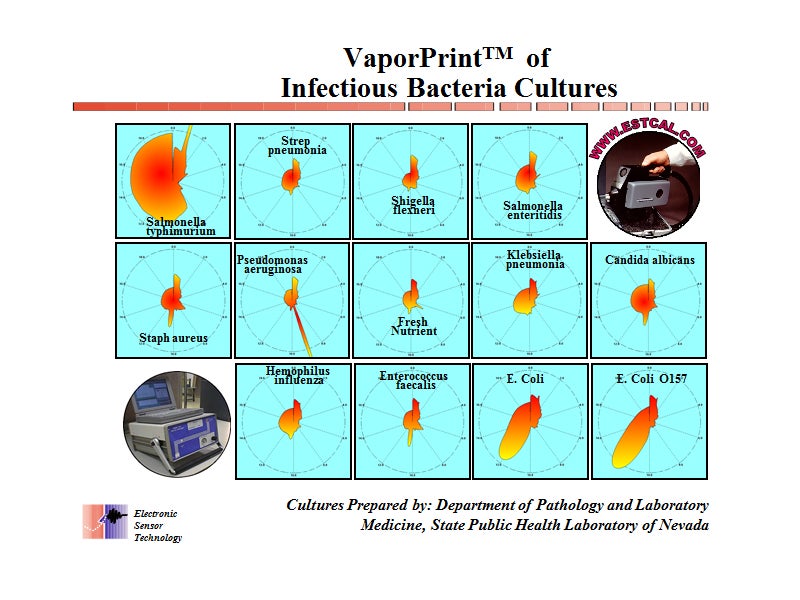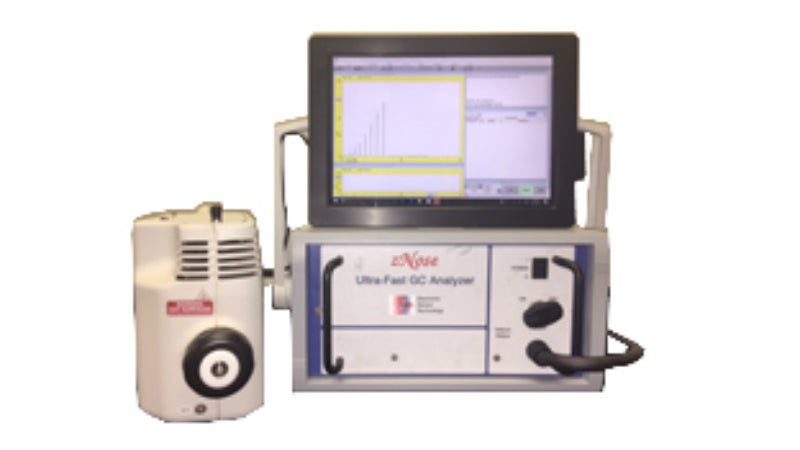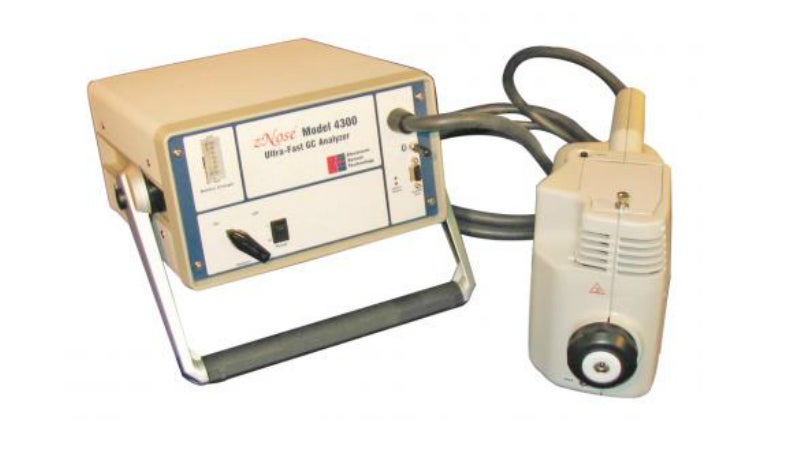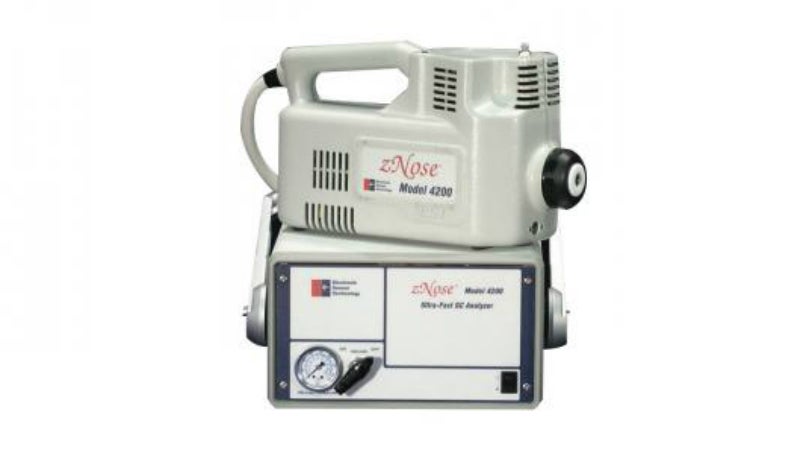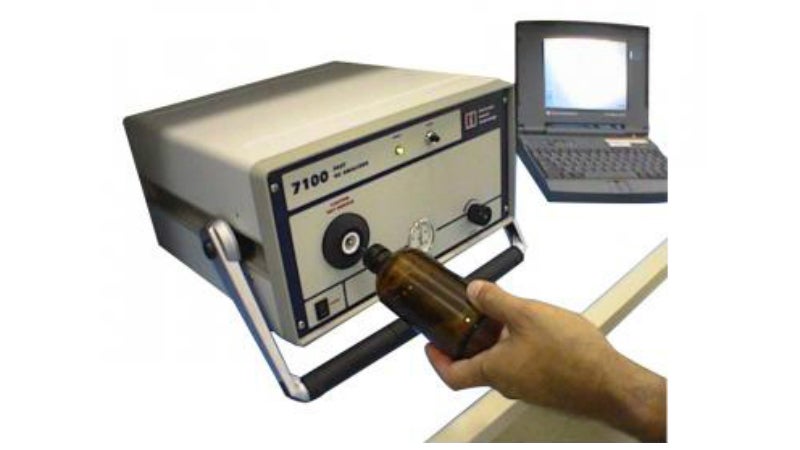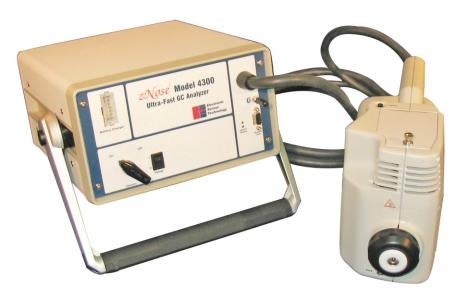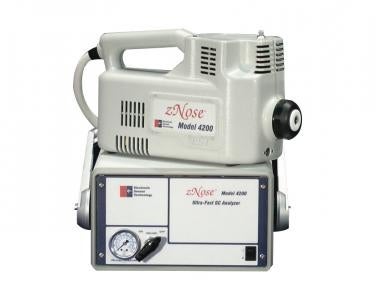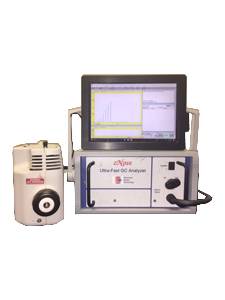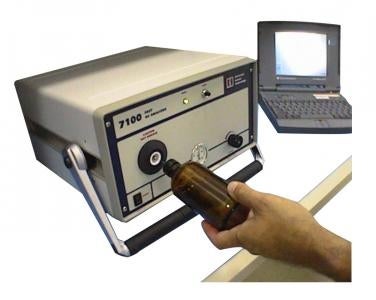
Electronic Sensor Technology provides equipment for the analysis and identification of odours and microbial compounds in medical products.
Called zNose, the system uses surface acoustic wave (SAW) technologies and chemical vapour sensors to offer accurate, real-time analysis. It conducts a simple three-step procedure to quantify odours within minutes.
Odour analysis machine for biological sample characterisation
zNose comprises four models with a wide range of applications. Model 4650 has an integrated computer for field work, while Model 4300 is battery operated for additional portability. Model 4200 performs up to 300 quantitative and qualitative odour analysis tests a day and Model 7100 is a benchtop unit that is suitable for laboratories.
The electronic device consists of a helium gas compartment, a capillary tube and a solid-state detector. This is connected to a heated inlet and pump, which samples ambient air. The connecting loop trap acts as a preconcentrator and injector. The unit comprises a high-speed assay microprocessor that collects data ready for transfer to a computer for analysis.
zNose is calibrated to n-alkaline vapour standards and uses the Kovats index to measure and identify chemical characteristics.
Chemical analysis devices to identify bacteria and mould in crops
zNose is a highly sensitive analytical tool that recognises and measures microbial volatile organic compounds (MVOC) such as mould, bacteria and fungi.
The electronic device performs high-quality chemical analysis on crops to quickly detect the odours, chemical vapours and aromatic signatures that are produced by biological contaminants. Removal of infected material prevents harmful health effects such as allergies and infections.
zNose can be used to assess plant quality, which can increase yield and prevent ergonomic loss for farmers. It can be used for natural and cultivated plant populations.
Research labs use this wireless, portable tool to create olfactory images and form a chemical profile of vegetable odours.
Blood, urine and body fluid analyser for disease diagnosis
zNose supports the healthcare industry by analysing the composition of blood, urine and other biological samples. The tool helps segregate and quantify the samples by using ultra-fast gas chromatography to identify characteristics and provide a full chemical profile.
Validated by the Office of National Drug Control Policy (ONDCP), the sensor has an expandable library of more than 700 chemical signatures. It performs cost-effective analytical measurements with high speed and accuracy.
The SAW technology also detects the odours of cleaning products such as antiseptic soaps and can be used to ensure a sterile environment is maintained. This can be used for quality assurance (QA) processes.
Gas chromatograph for biologists and botanists
zNose can determine the reproductive status, species and sex of laboratory animals, as well as test individuals for diseases such as swine and bird flu.
It can be used by botanists to assess quality and ripeness of fruit, herbs and medicinal plants.
With parts-per-trillion sensitivity, the device performs pattern recognition to compare detected odours to its vast library. Its VaporPrint software delivers a virtual representation for quick interpretation of data.


